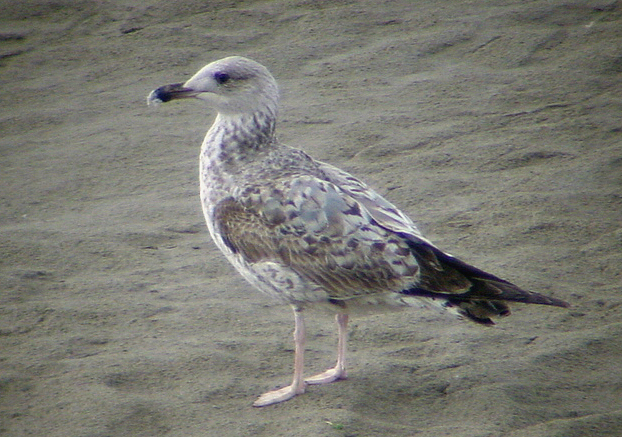 Yellow-legged
Gull - Larus michahellis
Yellow-legged
Gull - Larus michahellis
(last update: October 08 2013)
Coordinators:
Delfín González
Gabriel Martín
Antonio Gutierrez
Amir Ben Dov
Mars Muusse
Yellow-legged Gull michahellis 2CY, April 19 2002, Etaples, NW France (50.42N,1.34E).
The tertials are still juvenile. The inner 2
greater coverts were included in the post-juvenile moult last autumn. They are
clearly different from all the other greater coverts which are still juvenile.
Note that the white fringes on the tips are worn away. Median coverts #1-7 were
moulted as well and in the lower lesser row, #1-3, #5 were replaced. Six lesser
coverts show a bold arrow-headed pattern on the tip; these feathers were
included in the post-juvenile moult too.
Most of the scapulars are old brown second generation feathers (or with bleached
centres and appear almost white based) with the anchor
pattern reduced to a single shaft streak. The rear lower scapulars show an
obvious arrow-head pattern in the centre. Six scapulars are replaced for grey
third generation feathers, while in the lowest row of lower scapulars the last
feather is moulted to second generation.
Note that the base of the bill turns paler and the orbital ring becomes slightly more red in spring 2CY birds.
